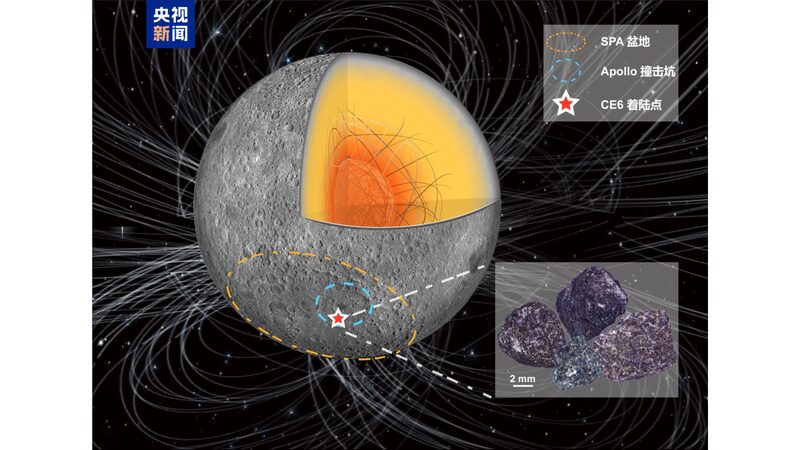🚀 Hold onto your moon boots, space fans! China's Chang'e-6 lunar probe has just dropped some out-of-this-world news that's got scientists—and us—over the moon! 🌕✨
For the first time ever, rock samples from the moon's far side have unveiled groundbreaking insights into our celestial neighbor's magnetic past. Published in the prestigious journal Nature this Thursday, the analysis reveals that the moon's magnetic field experienced a surprising comeback 2.8 billion years ago, after a significant decline around 3.1 billion years ago. 🎉
This discovery is shaking up what we thought we knew! It challenges the prevailing theory that the lunar dynamo—the engine generating the moon's magnetic field—stayed in a low-energy chill mode after its initial weakening. Instead, it's like the moon cranked the volume back up! 🔊🌚
On June 25, Chang'e-6 returned to Earth with a precious cargo of 1,935.3 grams of lunar samples from the moon's far side—a region that's like the \"dark side\" in Star Wars but without Darth Vader! 🌑😉
The rockstars at the Institute of Geology and Geophysics (IGG) under the Chinese Academy of Sciences analyzed four basalt fragments from this mission. They detected an unexpected increase in paleomagnetic field strength, suggesting that the lunar dynamo got a second wind. The resurgence might have been due to changes in the dynamo's energy sources or a revival of its driving forces. Talk about a cosmic comeback! 💫
\"Understanding the evolution of the lunar dynamo is super important for revealing the moon's internal structure, thermal history, and surface environment,\" said Cai Shuhui from the IGG, the study's corresponding author.
This isn't just science—it's like the moon's version of a plot twist in a blockbuster movie! 🎬🌖 The team's findings fill a billion-year-long gap in the lunar paleomagnetic record and provide \"a major advance in our understanding of lunar magnetism,\" according to a peer-reviewer of the paper. 🌟
And that's not all! These findings build on other epic discoveries from Chang'e-6. Last November, an IGG team reported two volcanic events on the moon's far side, occurring 2.8 billion and 4.2 billion years ago—also published in Nature. Another study in the journal Science confirmed that the low-titanium samples collected by Chang'e-6 are about 2.83 billion years old, giving us more clues about volcanic activity on the moon's far side.
Who knew the moon had so many secrets up its sleeve? 🌝🕵️♀️ As we continue to explore, who knows what other cosmic surprises await us? Stay tuned, space explorers! 🛰️🚀
Reference(s):
Chang'e-6 moon samples unveils surprising magnetic field resurgence
cgtn.com




